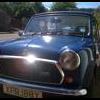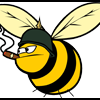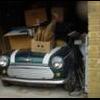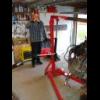
Wire Brushes And Grinding Discs
#1

Posted 28 May 2011 - 08:20 PM
Can't see a sticky on this but I was looking for advice on how to tackle various jobs and which wire brushes and grinding discs to use and where to get them from. Could knock up a helpful list here and add it as a sticky?
I have listed the jobs that I need advice on and have added my question or suggestion on what to use, if you experts out there wouldn't mind offering your experience it would be greatly received.
The tools I an referring to below are all Drill or Angle Grinder Fitments so advice on which ones are best would help
1. Removing Surface Rust - Standard Wire Brush, Twisted Knot or Flap Disc? (I have heard a Flap Disc could be used but if the rust is bad the disc will get clogged?)
2. Removing Underseal - Standard Wire Brush or Twisted Knot? (I tried using a flap disc but soon found it wasn't the tool for the job as it clogged up) Also heard a Heat Gun and Wallpaper Scraper would do the trick.
3. Removing Excess Weld (i.e. grinding down welds for painting) - Flap Disc?
4. Preparing metal for painting - Varying grades of Flap Disc, which grades and in what order?
5. Removing Paint - Strip and Clean Discs and Paint Thinners (This is recommended on the Mig Welding Forum paint guide HERE
Also to add value to this info could someone recommend brands of discs and attachments and good places to buy them from:
I have found a few:
Ceramic Flap Discs
Clean and Strip Discs
Thanks in advance
#2

Posted 28 May 2011 - 09:22 PM
1. Removing Surface Rust - Standard Wire Brush, Twisted Knot or Flap Disc? (I have heard a Flap Disc could be used but if the rust is bad the disc will get clogged?)
2. Removing Underseal - Standard Wire Brush or Twisted Knot? (I tried using a flap disc but soon found it wasn't the tool for the job as it clogged up) Also heard a Heat Gun and Wallpaper Scraper would do the trick.
3. Removing Excess Weld (i.e. grinding down welds for painting) - Flap Disc?
1.-- I just use a standard wire brush wheel for my angle grinder and its so far worked a treat.
2.-- I have no personal experience with this but have been told its better to scrape it off
3.-- Again no personal experience but my welding teacher told me to use a flap disc as you dont want to remove to much metal, just smooth it off.
I have no idea for the others, sorry.
Edited by Slinky1313, 28 May 2011 - 09:24 PM.
#3

Posted 29 May 2011 - 07:43 AM
IMHO.
1 Twisted Knot type wire cup brush in an angle grinder. A drill doesn't spin fast enough. The twisted type brush won't disintegrate as fast as the standard type. You won't completely erradicate the rust mechanically. Chemical treatment or blasting afterwards will be needed. Removing the rust by flap disc will thin down the metal and you might still not erradicate it.
2 Depends on the underseal but the scraper method is best. Most black underseals will just spin around on the surface and clog up the wire brush. Imagine stirring porridge that sticks to the bowl no matter what.
3 Flap discs are much nicer to use than grinding discs. I find them more predictable to use and quieter too. They come in various grades so can be really aggresive if you want it.
Wear goggles when using anything in an angle grinder, ear plugs for the grinding and flap discs.
Adam
#4

Posted 29 May 2011 - 09:29 AM
I used to use a grinding disc for flatting welds, but I found it was far too aggressive and thinned the metal. The flap disc is a nice gentle way of flatting down the metal without thinning it. By all means use a grinding disc first and then use a flap disc to smooth it all out.
But definitely use an angle grinder.. a drill doesn't have the RPM.
& use ear protectors, gloves and goggles.. goes without saying I hope. The knotted wire wheel can loose some of its wires and I often find them impaled in my clothes and can feel them hitting my exposed skin.. wouldn't fancy getting one stuck in my eye.
#5

Posted 29 May 2011 - 11:34 AM
#6

Posted 29 May 2011 - 12:04 PM
the wire cup is good for removing underseal & i use nitromors stripper if its stubborn.
for metal prep prior to paint i use an electric dual action sander with varying grades of self adhesive discs-i never use anything courser than an 80 grit disc as it can leave score marks in metal bodywork.
the modern high build primers can hide a multitude of sins but i'm old school in that prep is everything-you need a good surface to paint onto. if you cut corners on the initial prep, then the overall results will show through when you apply your expensive top coats.
#7

Posted 29 May 2011 - 06:33 PM
For underseal i would use a heat gun and a good quality scraper. Followed by white spirits to remove any left over residue.
Twisted wire cup for most rust removal although if its really bad then go the grinder route. You can also use these for paint removal although its time consuming.
I would normally use a DA sander with 80 grit discs then followed by finer grades ready for paint.
Etch primer followed by a good quality filler primer (Upol) then a good flat back will cover all but the harshest of sanding marks. If you use a guide coat this will show up most defects when sanding back for painting.
Flat back with 600 to 800 grit wet and dry for a really good finish ready for top coat. In between top coats use a fine scotch brite or fine wet and dry. I then have been using 2000 wet and dry with plenty of soapy water to remove any high points then G3, Perfect III and Polish Rosa to bring out the shine.
#8

Posted 30 May 2011 - 10:53 AM
I would normally use a DA sander with 80 grit discs then followed by finer grades ready for paint.
Etch primer followed by a good quality filler primer (Upol) then a good flat back will cover all but the harshest of sanding marks. If you use a guide coat this will show up most defects when sanding back for painting.
Flat back with 600 to 800 grit wet and dry for a really good finish ready for top coat. In between top coats use a fine scotch brite or fine wet and dry. I then have been using 2000 wet and dry with plenty of soapy water to remove any high points then G3, Perfect III and Polish Rosa to bring out the shine.
All the replies to this post have been really helpful.
sonikk4 - couple of questions about your post above:
1. By DA sander you do you mean Dual Action like THIS
2. You mention after applying a U-POL Filler Primer to use a flat back - what's flat black? - can you give some examples?
Sorry if i'm being thick.
#9

Posted 30 May 2011 - 11:24 AM
Using the info in this post I have put together the following info on how to tackle various sanding / grinding jobs and which wire brushes and grinding discs to use and where to get them from.
The tools I an referring to below are all Drill or Angle Grinder Fitments so advice on which ones are best would help
1. Removing Surface Rust - For this it is best to use a Twisted Knot Wire Brush in an Angle Grinder, you could use a drill attachment but the slower RPM will make the job harder. Do not waste good money using Flap Discs, they will tear up or remove too much metal? Once rust is removed treat with KRUST.
2. Removing Underseal - The best method for removing Underseal is to use a Heat Gun and a Good Scraper, once the excess is removed clean of remainder with white spirit. You can also use a wire brush attachment but its a lot more messy, the wire brush will get clogged with muck. Again do not use flap discs as they will clog up.
3. Removing Excess Weld - Flap Discs all the way. Zirconium or Ceramic, Ceramic are slightly more expensive but apparently last longer.
4. Preparing metal for painting - Decided not to include this as its more a specialist subject suffice to say the final result on any paint job will rely on the smoothness of the are being painted.
5. Removing Paint - Strip and Clean Discs and Paint Thinners (This is recommended on the Mig Welding Forum paint guide HERE
Some suppliers and ideas:
Zirconium Flap Discs
Ceramic Flap Discs
Clean and Strip Discs
#10

Posted 30 May 2011 - 03:23 PM
I would normally use a DA sander with 80 grit discs then followed by finer grades ready for paint.
Etch primer followed by a good quality filler primer (Upol) then a good flat back will cover all but the harshest of sanding marks. If you use a guide coat this will show up most defects when sanding back for painting.
Flat back with 600 to 800 grit wet and dry for a really good finish ready for top coat. In between top coats use a fine scotch brite or fine wet and dry. I then have been using 2000 wet and dry with plenty of soapy water to remove any high points then G3, Perfect III and Polish Rosa to bring out the shine.
All the replies to this post have been really helpful.
sonikk4 - couple of questions about your post above:
1. By DA sander you do you mean Dual Action like THIS
2. You mention after applying a U-POL Filler Primer to use a flat back - what's flat black? - can you give some examples?
Sorry if i'm being thick.
When you spray filler primer on because it is thicker it can leave ridges etc but its primary purpose is to fill small imperfections. By using a 600 to 800 grit wet and dry paper and a sanding block you can ensure the surface is perfectly smooth ready for either another coat of standard primer or top coat.
To aid this process a guide coat can also be sprayed on as well which when sanded back will highlight any high/low spots which need to be sorted prior to top coat being applied.
And with regards to the DA sander ,yes that is one type. I use a palm type DA sander.
1 user(s) are reading this topic
0 members, 1 guests, 0 anonymous users
















